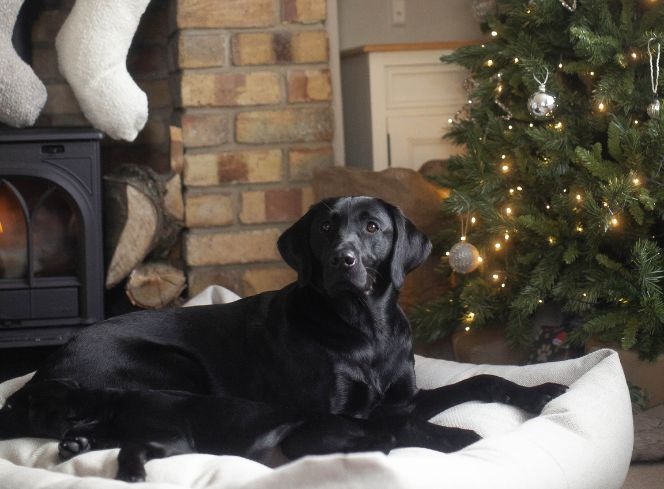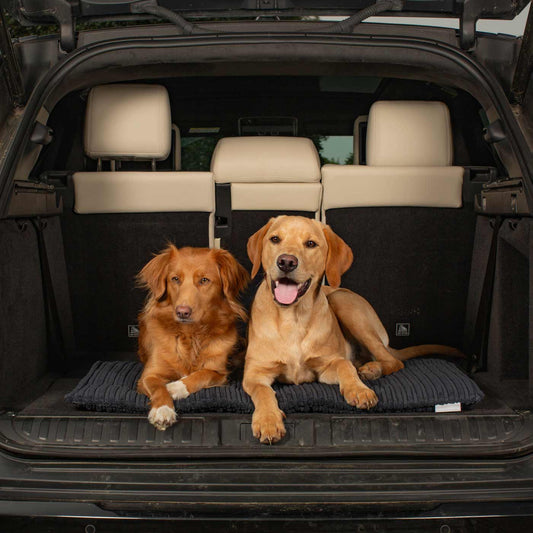As the festive season approaches, many families face the delightful dilemma of where to spend their Christmas break. For those with canine companions, the choice can be even more intricate. Thankfully, the trend of dog-friendly Christmas breaks is gaining momentum, offering cherished memories for both two-legged and four-legged members of the family. In this guide, we explore the top destinations and accommodations tailored to ensure your holidays are merry and pet-friendly.
Dog-Friendly Christmas Breaks: A Growing Trend

In recent years, the demand for dog-friendly holiday accommodations during the Christmas season has soared. Pet owners seek destinations where their furry friends are not just accommodated but welcomed with open arms. From cozy cottages to luxurious retreats, the options for spending the holidays with your canine companion have never been more diverse.
Exploring Dog-Friendly Christmas Breaks in the UK
The United Kingdom boasts a plethora of options for those seeking dog-friendly Christmas breaks. Whether you envision a tranquil retreat in the Lake District or a coastal escape in Cornwall, there's something to suit every preference.
Luxury Retreats for You and Your Pooch
For those yearning for a touch of indulgence, luxury dog-friendly Christmas breaks offer the perfect blend of opulence and pet-friendly amenities. Imagine curling up by a crackling fireplace with your canine companion after a day of exploring the picturesque landscapes of Scotland or the charm of the Cotswolds.
Quaint Holiday Cottages in Idyllic Settings
Escape the hustle and bustle of city life by opting for a cozy holiday cottage nestled in the heart of the countryside. From the rugged beauty of the Lake District to the rolling hills of Yorkshire, these charming accommodations provide the ideal backdrop for a festive retreat with your beloved pet.
Pet-Friendly Hotels: Where Comfort Meets Convenience
For those seeking the convenience of hotel amenities without compromising on pet-friendly policies, there are numerous options across the UK. From boutique establishments to renowned chains, pet-friendly hotels ensure that both you and your furry friend feel right at home during the holiday season.
Pet-Friendly Winter Escapes Beyond the UK
While the UK offers a plethora of options for dog-friendly Christmas breaks, adventurous pet owners may also consider international destinations for their winter holidays with dogs. From snow-capped mountains to sun-kissed beaches, the world is your oyster when it comes to exploring new horizons with your canine companion.
New Year Ski Holidays in Pet-Friendly Destinations
Embrace the thrill of the slopes with a New Year ski holiday in pet-friendly resorts across Europe. From the majestic peaks of the French Alps to the scenic vistas of Switzerland, there are endless opportunities for winter adventures with your four-legged friend by your side.
Cosy Holiday Cottages: A Home Away From Home
Whether you're seeking a rustic retreat in the Scottish Highlands or a charming cottage in the heart of the French countryside, pet-friendly holiday cottages offer the perfect escape for those looking to explore new destinations with their dogs.
Making Memories: Tips for a Pet-Friendly Christmas Break

While planning your dog-friendly Christmas break, consider the following tips to ensure a memorable and stress-free holiday experience:
- Check Pet Policies: Before making reservations, verify the pet policies of your chosen accommodations to ensure they align with your needs and expectations.
- Pack Essentials: Don't forget to pack your dog's essentials, including food, water, bedding, and any medications they may require during the trip.
- Plan Pet-Friendly Activities: Research pet-friendly attractions and activities at your destination to ensure your furry friend can join in on the fun.
- Be Mindful of Your Surroundings: Respect local regulations and etiquette when exploring new environments with your dog, and always clean up after your pet.
- Capture the Moments: Document your dog-friendly Christmas break with photos and videos to cherish for years to come.
Travel Essentials for Dogs: Ensuring Comfort and Convenience

When embarking on a dog-friendly Christmas break, packing the right essentials for your canine companion is crucial to ensure their comfort and well-being throughout the journey. From familiar comforts to practical necessities, here's a guide to the must-have travel essentials for dogs:
- Comforting Bedding: Bring along your dog's favourite bedding or blanket to provide them with a sense of familiarity and comfort, especially in new environments. A cosy spot to rest will help your furry friend feel secure during your travels and throughout your stay. We love to take our travel mats or the ultimate travel capsule when we go away with our pups, they both fold up and have a handy carry handle so are perfect for travel.
- Nutritious Food and Treats: Pack an ample supply of your dog's regular food to avoid any dietary disruptions during your trip. Additionally, bring along some tasty treats to reward good behaviour and keep your canine companion satisfied during long journeys or outdoor adventures.
- Portable Water and Bowl: Hydration is key, especially when traveling with pets. Carry a portable water bottle and collapsible bowl to ensure your dog stays hydrated while on the go. Be mindful of water quality, especially if you're exploring unfamiliar areas.
- Lead and Harness: A sturdy lead and comfortable harness are essential for keeping your dog safe and secure during walks and outdoor excursions. Opt for a lead that provides ample control without causing discomfort, and ensure your dog's identification tags are up to date with current contact information.
- Travel First Aid Kit: Prepare a travel first aid kit tailored to your dog's needs, including items such as bandages, antiseptic wipes, tweezers (for removing ticks or splinters), and any medications they may require. Familiarise yourself with basic first aid procedures for pets in case of emergencies. The Charlie the Vet pet first aid kit is perfect for travel, it has everything you could need in and even comes in a handy little case!
- Grooming Supplies: Pack grooming essentials such as a brush, nail clippers, and pet-safe shampoo to keep your dog looking and feeling their best throughout your holiday, especially if you’re going on an outdoorsy holiday with lots of muddy or wet walks. Regular grooming helps prevent matting, tangles, and discomfort, especially after outdoor activities.
- Comforting Toys and Chewables: Bring along a selection of your dog's favourite toys and chewables to keep them entertained during downtime. Interactive toys and puzzle feeders can help alleviate boredom and provide mental stimulation, particularly in unfamiliar surroundings. You might want to stock up on some fun new toys to keep them busy and stimulated whilst you’re away.
- Safety and Restraint: Ensure your dog's safety during car travel by using a secure and appropriately sized crate or a safety harness designed for use in vehicles. Proper restraint not only prevents injuries in the event of sudden stops or accidents but also helps minimise distractions while driving. For small dogs and puppies we’ve got our booster seat and for larger dogs the KONG ultimate safety tether is perfect.
In conclusion, the era of dog-friendly Christmas breaks has ushered in a new wave of holiday experiences for pet owners across the globe. Whether you choose to explore the scenic landscapes of the UK or embark on an international adventure with your furry companion, the memories forged during these festive escapes are bound to last a lifetime. So pack your bags, leash up your pup, and embark on a Christmas journey filled with warmth, joy, and wagging tails.

































































































